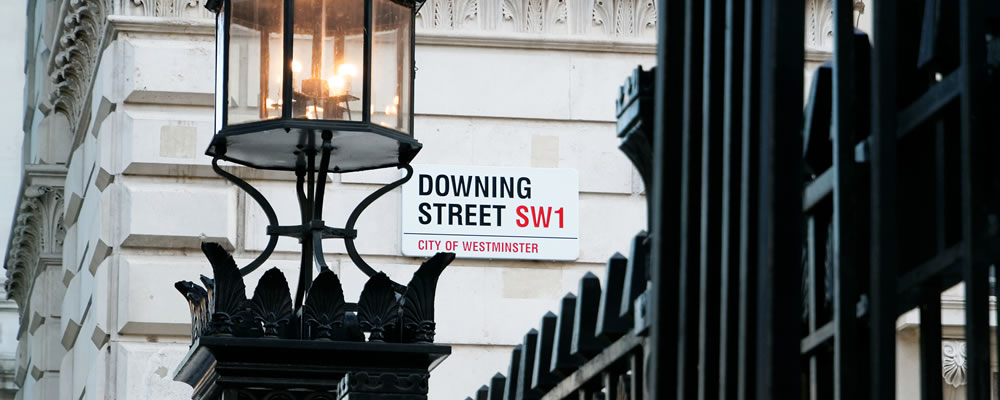- Pound Sterling exchange rates surge – Early replacement Prime Minister settles market uncertainty
- Euro mixed as high-yield demand lowers bond prices – Italian financial crisis weighs on trader confidence
- US Dollar exchange rates dive – Reduced demand for safe-haven assets and delayed Federal Reserve rate hike bets weigh
- Pound Sterling exchange rates forecast to hold gains ahead of BoE rate decision – Central bank forecast to ease policy on Thursday
As traders await the Bank of England’s (BoE) interest rate decision, forecast to yield a benchmark interest rate cut of 25 basis points, Pound Sterling exchange rates rallied.
Both the GBP EUR and GBP USD exchange rates registered fairly impressive gains, with the Pound surging by over 1% against the Euro over the course of the European session.
The Pound closed out Tuesday 4 cents higher than it’s post-Brexit low of 1.15 against the Euro.
On Wednesday GBP/EUR touched a high of 1.2048 before sliding back to trend in the region of 1.1957, down slightly on the day’s opening levels.
UK data has been limited this week, with investors instead focusing on developments in the UK’s political situation and the upcoming BoE meeting.
As analysts are widely expecting an interest rate cut, the Pound’s gains could be reversed as the week draws to a close.
(Previously updated 13/07/2016)
Pound Sterling Exchange Rates Predicted to Decline after BoE Meeting
Although there is a high chance that the Pound will extend gains in the run up to the BoE’s interest rate decision, now that trader uncertainty eased following the swifter-than-expected appointment of Theresa May as replacement Prime Minister, Sterling exchange rates are predicted to crash in the immediate aftermath.
This is because markets have priced-in a 75% chance of a benchmark interest rate cut, with some even expecting a 50 basis point drop to 0%. Most economists forecast a 25 basis point cut, however.
RBS economist Ross Walker believes ‘failure to deliver [a cut] would risk unnecessarily undermining market confidence.’ He went on to say;
‘The MPC might prefer to wait for the detailed August forecast round before sanctioning lower rates, but it is not obvious that there would be significantly more information by that point (a scattering of post-referendum surveys). The BoE was more aggressive and decisive during the financial crisis of 2008-09. That episode probably provides the playbook for the reaction function this time. With Bank Rate swaps rate largely priced by the August, GBP reaction looks dependent on what the MPC signals about the path of policy beyond this week’s meeting.’
The Pound could remain above the recent 31-year low against the US Dollar if Theresa May’s appointment as Prime Minister continues to support the UK unit.
EUR Exchange Rates Forecast to Struggle as EU Stability Concerns Investors
Although the single currency has managed to avoid larger losses in risk-on trade thanks to falling bond prices, the Euro remains weak against many of its currency rivals.
One of the major headwinds is mounting anxiety regarding the stability of the European Union. Italy’s financial crisis is thought be a much more pressing concern for the future of the EU than the UK’s Brexit.
The International Monetary Fund (IMF) warned that Italy faces ‘two lost decades’ unless policymakers do more to control debt and clean up the country’s banks.
‘On current projections, the economy is not expected to return to its pre-crisis peak until the mid-2020s, implying nearly two lost decades,’ the IMF said. ‘The challenge is to turn around productivity performance, facilitate faster bank balance sheet clean-up, and lower public debt.’
Domestic data is not expected to feature highly for the remainder of this week thanks to a comparatively sparse European economic data docket.
With that said, Friday’s Eurozone consumer prices data for June may provoke volatility.
The Pound Sterling to Euro (GBP EUR) exchange rate was trending within the range of 1.1730 to 1.1874 during Tuesday’s European session.
US Dollar Exchange Rates Forecast to Decline against Reduced Federal Reserve Rate Hike Odds
The initial US Dollar appreciation following last week’s better-than-expected Change in Non-Farm Payrolls result was short-lived. This was partly because the data referred to a pre-Brexit US, but also because many fear it will have little impact in pressuring the Federal Open Market Committee (FOMC) into hiking the official cash rate.
Most analysts predict that the Fed will delay tightening monetary policy until 2017 at the earliest, although market odds of a December rate hike rose a little following improved labour market conditions.
One of the major factors holding back tighter policy is the poor health of the global economy. If smaller or emerging market-economies struggle in the face of tighter Fed policy, the FOMC may be forced into reversing any decision.
What’s more, the US Dollar will rally if the Fed hikes rates. US Dollar overvaluation is already a concern and will limit profitability from trade.
Steve Goldman of Goldman Management stated;
‘Everything needs to go perfectly for the Fed to raise rates in September. For that, we need a couple more solid employment numbers. We also need to see inflation tick closer to the Fed’s 2 percent target. The financial markets need to cooperate and we shouldn’t have any abrupt tightening because of what’s going on in the UK. Right now, I think the best bet would be that they wait until December.’
The Pound Sterling to US Dollar (GBP USD) exchange rate was trending within the range of 1.2973 to 1.3188.



